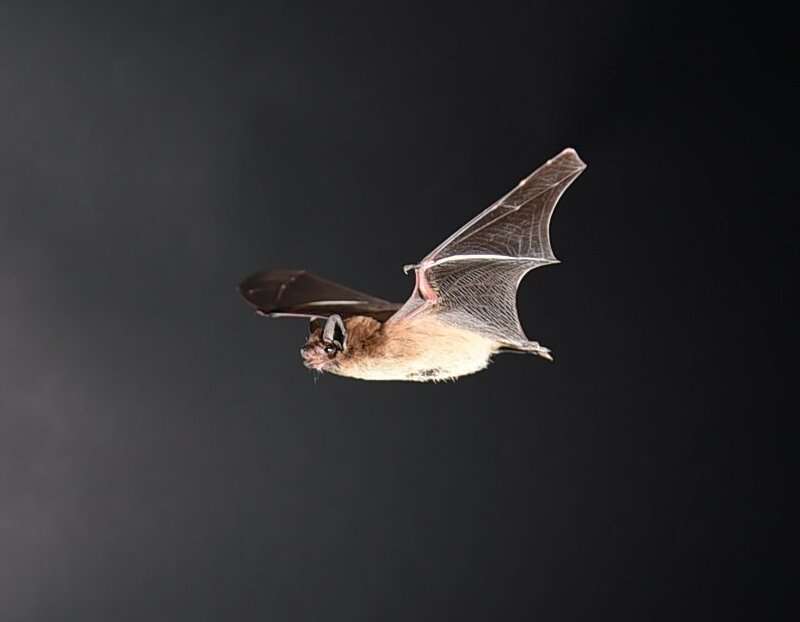This article has been reviewed according to Science X's editorial process and policies. Editors have highlighted the following attributes while ensuring the content's credibility:
fact-checked
peer-reviewed publication
trusted source
proofread
Bats' ability to convert energy into muscle power shown to be affected by flight speed

In a new study published in the journal Proceedings of the Royal Society B, researchers have studied the efficiency of migratory bats—a species that weighs about eight grams and is found in almost all of Europe. Efficiency, in this case, is the ability to convert supplied energy into something we need. For bats and birds, it's the energy required to fly. Now, a research team in Lund states that the efficiency varies with the bats' flight speed. The faster the bats flew, the more energy they managed to convert into muscle power.
"Previously, we have believed that efficiency is a constant. So this is a bit of a breakthrough," says Anders Hedenström, biology researcher at Lund University.
Using high-speed cameras, laser and smoke in a wind tunnel, the researchers have measured the bat's kinetic energy. They have then compared these results with the animals' metabolism—a methodological breakthrough with technically advanced measurements. In the past, researchers have only measured either kinetic energy or metabolic rate and compared this to theories.
"Our study reveals that the efficiency is lower than expected in this small migratory bat, but that it increases with flight speed," says Anders Hedenström.
The bat's ability to convert food into energy in flight controls the ability to produce a forward and upward force to overcome air resistance and gravity. This is what is known as metabolic energy. How efficiently animals use metabolic energy during flight has previously been assumed to be the same at all speeds.
"Until now, the calculations have greatly underestimated the 'flight costs' of the migratory bat, which has made it difficult to predict their migratory behavior. Our results provide a new basis for studying their behavior," says Anders Hedenström.
The researchers' new discovery helps us to better understand the migratory behavior of these mysterious bats. Compared to bird migrations, bat migrations are not as well mapped.
"We have previously analyzed the blackcap, a bird which also migrates. The bird's efficiency was 20% compared to the bat's 10%. This means that of all the energy the bat consumes, only 10% is useful, while it's 20% for the blackcap. The bat thus uses the energy less efficiently. The difference may be because birds only have two flight muscles, while bats have about 15 muscles for the same job," says Anders Hedenström.
More information: Shannon E. Currie et al, Conversion efficiency of flight power is low, but increases with flight speed in the migratory bat Pipistrellus nathusii, Proceedings of the Royal Society B: Biological Sciences (2023). DOI: 10.1098/rspb.2023.0045
Journal information: Proceedings of the Royal Society B
Provided by Lund University





















